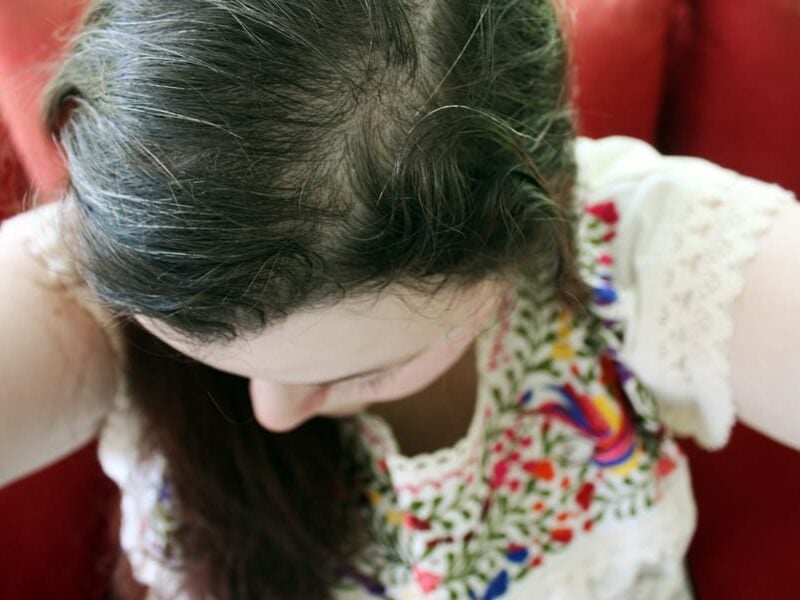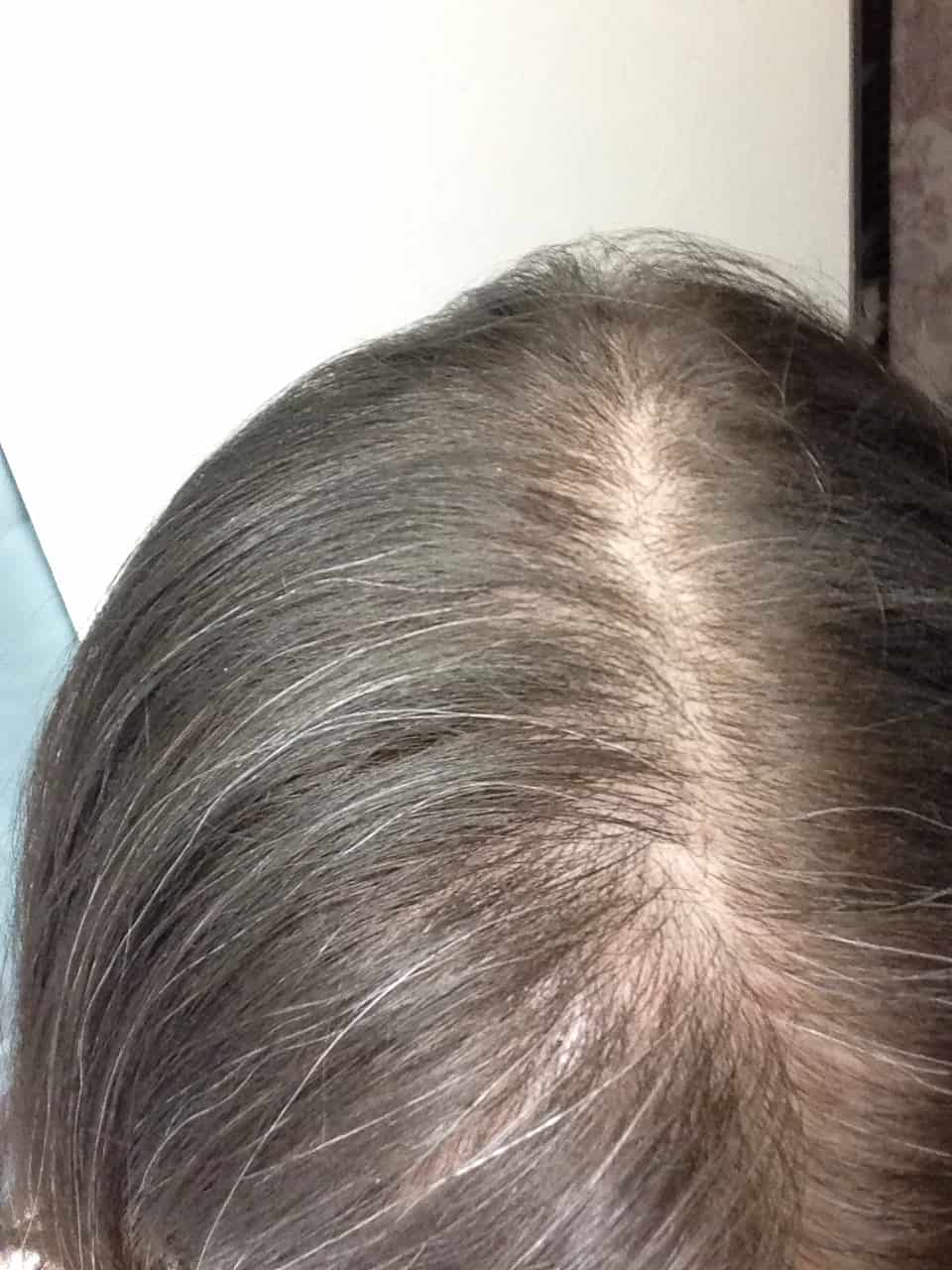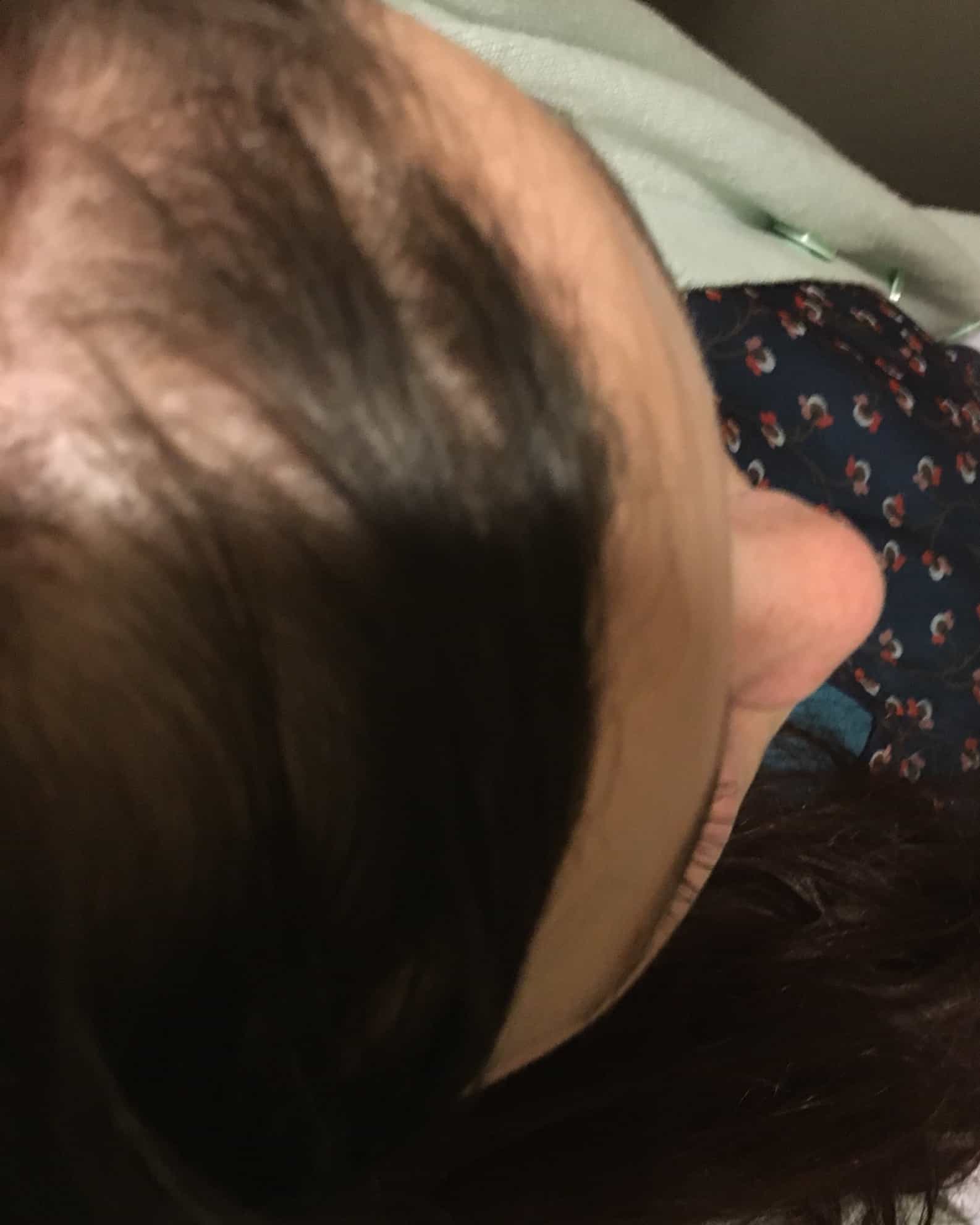This post includes affiliate links which help support Autumn All Along.
I thought I would open up a little bit more about what my experience with female hair loss in my 20s has been like. First of all, when I found out my hair loss was due to an autoimmune disease I have kept my hair regrowth hopes and expectations very low (and continue to).
Since I am adopted and have limited medical history, I’ve just tried to be open minded that female hereditary hair loss might just be something I have. For me, this has been the healthiest way for me to move forward and accept my hair loss in my 20s. However, it wasn’t always that easy.
GRIEVING WILL HAPPEN
You know the 7 stages of grief? Well, I had them.
I was angry my hair was falling out and then I was angry because I cared so much it was falling out. I began realizing how much I cared about dead protein on my head and I spent a lot of time crying.
I began bargaining about all of the things I had done with my hair (how I brushed it, what I shampooed and conditioned it with, did I blow dry it too much?) and rationalized that this is actually the reason my hair was falling out.
As people noticed how thin my hair was, I became extremely embarrassed and more uncomfortable with my appearance if it made them uncomfortable. I became upset when I couldn’t figure out how to match a hat with my outfit and frustrated when I realized my hair was waaaay too noticeable if I wanted something easy like a ponytail.
FEMALE HAIR LOSS IS DIFFERENT
This is a picture of my hair in 2014. I took this picture because I was noticing how prematurely gray I am 😉 . I can see now that my hair was receding in these photos, but I didn’t know what to look for at the time. See, the thing with female hair loss is it begins at the parts of your hair. Male hair loss is more circular.
I had had a lot of physical trauma and injuries from car wrecks so I lost a lot of hair during that period, but I had no idea it would keep happening and it was so slow I didn’t notice!
Sooo…this is what my hair looked like in May of this year. Devin and I are kind of short and we don’t spend a lot of time looking at the top of my scalp 😉 .
I actually found out about my hair loss because a friend kindly said she had been worried about me and my stress levels since she could see so much of my scalp. Like the grieving cycle, I was in denial even though I went home and combed my fingers through my hair.
It wasn’t until I went to the zoo and found myself sunburned on weird parts of my scalp that I took pictures of the top of my head and found this. I was shocked to say the least… I wasn’t expecting to have hair loss in my 20s.
I spent the next few weeks until my Doctor’s appointment frantically researching everything I could about hair loss. It wasn’t the happiest of my times. Devin spent a lot of time daily reassuring me that he didn’t care about my hair and then wide-eyed when I read the price of different treatments to him.
I had decided that I was going to do laser treatments because ATLANTA IS TOO HOT FOR A STINKING WIG. Seriously though, there is a reason why Atlanta is called Hotlanta.
THE SUPPLEMENTS YOU SHOULD TAKE
Through my research and a conversation with my Doctor I found that the most important things to have in your diet are pretty simple:
- Biotin
- Prenatals
- Protein
I typically drink a protein smoothie everyday. I love Garden of Life smoothie powders because they are organic, non-GMO, dairy-free, gluten-free, and void of any other food trigger any person could possibly have. I mix them with berries, almond milk, spinach, and a banana and it helps me know that I’m getting a nutritional supplement in my day that I probably would not have otherwise. - Iron (if your Doctor says you need it)
- Vitamin C (if you have an issue with iron)
- Vitamin D (if your Doctor says you need it)
After my lab results, I had such a big Vitamin D deficiency that I’ve had to take 50,000 units for prescription. I researched prenatals for a few hours in the store trying to find something that had a lot of iron and Vitamin C (helps you absorb iron). I also began putting protein powder in my smoothies that were very vitamin fortified to cover any gaps I could have in my diet.
What I was surprised to learn though is Rogaine isn’t recommended to women who want to have children. That was baffling to me, but since Rogaine regulates your hair cycles once you stop taking it…your hair falls out and you can’t take it while you’re pregnant.
IT GETS BETTER
While this has been a weird experience to have and I do have lots of hair growing in now, I’m oddly really grateful I’ve had this experience. It has been eye opening for me to see how many things I invest my time in that really have nothing to do about the type of person I am even if they do make me feel good about my appearance.
It has helped me shatter some expectations about physical appearance I’ve had of myself and gain empathy for an issue I have never had prior to this. (I decided to get a haircut later which helped out as well.)
I would be lying if I didn’t say that I do have hopes that my hair will keep growing, but in the mean time, my hat collection has been nicely expanding 🙂 .
UPDATE // 3/2020
If you’re curious about what my hair was like a year after discovering my hair loss, I wrote a post here talking about that.
Is my hair still falling out a massive rates? No, however, it is still very thin on top and through other places in my hair. After working with a new endocrinologist and other doctors, I’m now going to go to dermatologist soon to get a formal diagnosis of my hair loss.
My guess is that I have chronic telogen effluvium (hair loss due to stress or medical issues). As it is now, my hair will fall out in spells after stressful experiences, and then a lot of it will grow back after a few months. However, because there are parts of the top of my hair that have never grown back… I may have female hair loss in addition.





